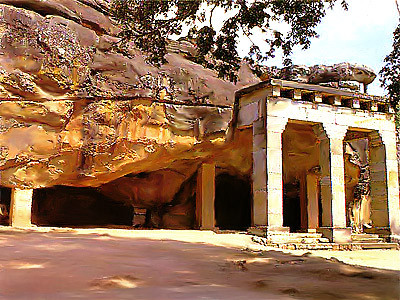 Hathigumpha inscription is in Udayagiri, near Bhubaneshwar in Orissa. It consists of seventeen lines that have been carved in deep cut Brahmi letters. It faces the Rock edicts of Ashoka at Dhauli. The inscription is written in Kalinga Brahmi alphabet. This is dated back to the 13th year of Kharavela`s reign.
Hathigumpha inscription is in Udayagiri, near Bhubaneshwar in Orissa. It consists of seventeen lines that have been carved in deep cut Brahmi letters. It faces the Rock edicts of Ashoka at Dhauli. The inscription is written in Kalinga Brahmi alphabet. This is dated back to the 13th year of Kharavela`s reign.
This inscription is the main source of information regarding the ruler Kharavela. Hathigumpha inscription mentions various conquests of this king, starting with his combat against the Satavahana king Satakarni. It also mentions that Kharavela forced the Indo-Greek king Demetrius to retreat from Rajgir. It also mentions that in the very first year of his coronation he repaired the gate, rampart and structures of the fort of Kalinga which had been damaged by storm. He also built the steps for the cool tanks and laid all gardens at the cost of thirty five hundred thousand.
In the second year he had sent to the west a large army that consisted of horse, elephant, infantry and chariot and with that troop marched up to the river Kanhavemna. Thereafter the channels that had been excavated by king Nanda three hundred years before were allowed to flow into Kalinga through Tanasuli. In the seventh year he was blessed with son. In the 8th year of his reign, he attacked Rajagriha in Magadha and forced the Indo-Greek king Demetrius to go back to Mathura.
In the 12th year he attacked the king of Uttarapatha and brought back the image of Kalinga Jina and the jewels plundered by him from the Kalinga royal palace, along with the treasures of Anga and Magadha. Thereafter he attacks the kingdom of Magadha.
This article is a stub. You can enrich by adding more information to it. Send your Write Up to content@indianetzone.com



















